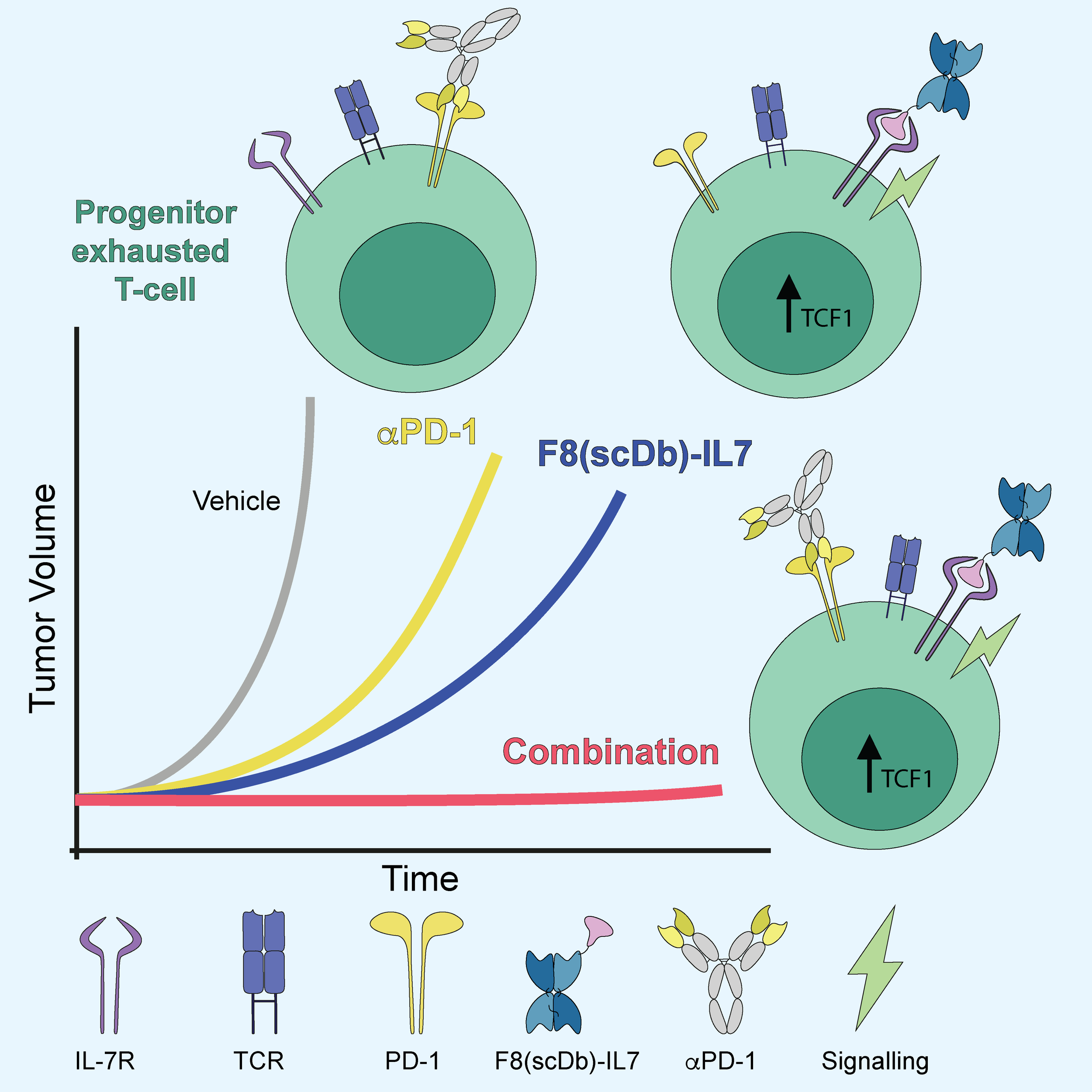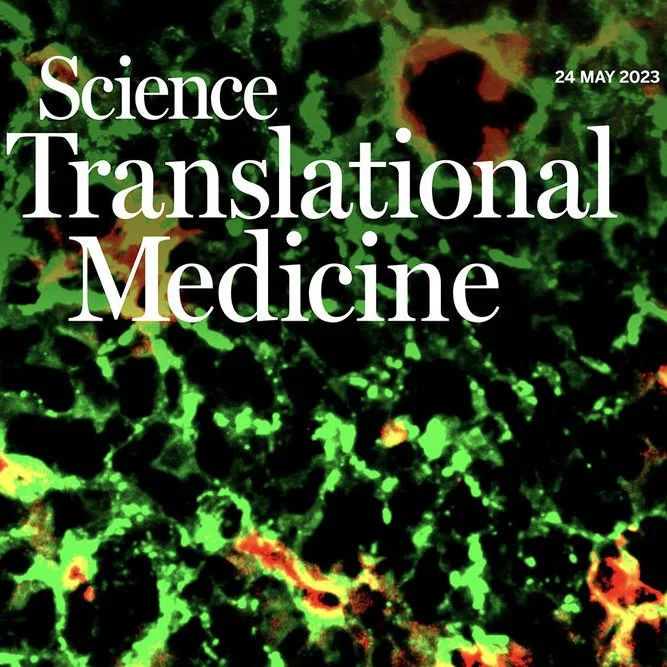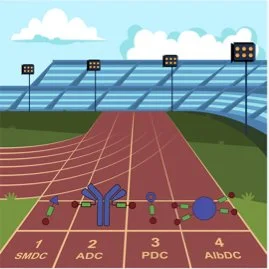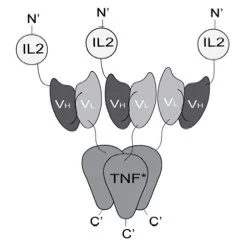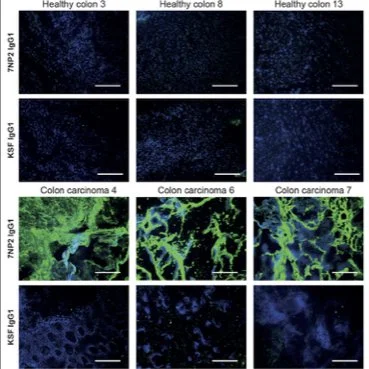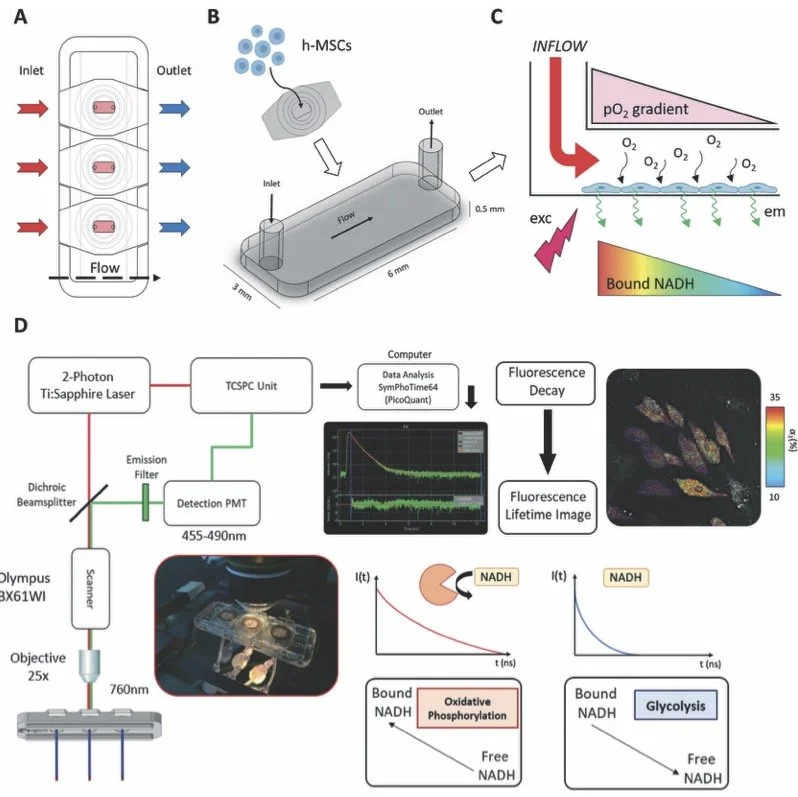AUTORSHIPS
Journal of ImmunoTheraphy of Cancer
with Marcus G. Manz, Michael Weller, Tobias Weiss, Dario Neri and Roberto De Luca
-
Background: Anti-PD-1 antibodies have revolutionized cancer immunotherapy due to their ability to induce long-lasting complete remissions in a proportion of patients. Current research efforts are attempting to identify biomarkers and suitable combination partners to predict or further improve the activity of immune checkpoint inhibitors. Antibody-cytokine fusions are a class of pharmaceuticals that showed the potential to boost the anti-cancer properties of other immunotherapies. EDA-FN, which is expressed in most solid and haematological tumors but is virtually undetectable in healthy adult tissues, is an attractive target for the delivery of cytokine at the site of disease.
Methods: In this work, we describe the generation and characterization of a novel interleukin-7-based fusion protein targeting EDA-FN termed F8(scDb)-IL7. The product consists of the F8 antibody specific to the alternatively spliced extra domain A (EDA) of fibronectin (FN) in the single-chain diabody (scDb) format fused to human IL-7.
Results: F8(scDb)-IL7 efficiently stimulates hPBMCs in vitro. Moreover, the product significantly increases the expression of T Cell Factor 1 (TCF-1) on CD8+ T-cells compared to an IL2-fusion protein. TCF-1 has emerged as a pivotal transcription factor that influences the durability and potency of immune responses against tumors. In preclinical cancer models, F8(scDb)-IL7 demonstrates potent single-agent activity and eradicates sarcoma lesions when combined with anti-PD-1.
Conclusions: Our results provide the rationale to explore the combination of F8(scDb)-IL7 with anti-PD-1 antibodies for the treatment of cancer patients.
2023 - An Engineered IFNγ-Antibody Fusion Protein with Improved Tumor-Homing Properties
Pharmaceutics
with Marcus G. Manz, Michael Weller, Tobias Weiss, Dario Neri and Roberto De Luca
-
Interferon-gamma (IFNγ) is one of the central cytokines produced by the innate and adap- tive immune systems. IFNγ directly favors tumor growth control by enhancing the immunogenicity of tumor cells, induces IP-10 secretion facilitating (CXCR3+) immune cell infiltration, and can prime macrophages to an M1-like phenotype inducing proinflammatory cytokine release. We had previously reported that the targeted delivery of IFNγ to neoplastic lesions may be limited by the trapping of IFNγ-based products by cognate receptors found in different organs. Here we describe a novel fusion protein consisting of the L19 antibody, specific to the alternatively spliced extra-domain B of fibronectin (EDB), fused to a variant of IFNγ with reduced affinity to its cognate receptor. The product (named L19-IFNγ KRG) selectively localized to tumors in mice, showed favorable pharmacokinetic profiles in monkeys and regained biological activity upon antigen binding. The fusion protein was investigated in two murine models of cancer, both as monotherapy and in combination with therapeutic modalities which are frequently used for cancer therapy. L19-IFNγ KRG induced tumor growth retardation and increased the intratumoral concentration of T cells and NK cells in combination with anti-PD-1
2022 - Design and Characterization of Novel Antibody-Cytokine Fusion Proteins Based on Interleukin-21
Antibodies
with Dario Neri , Tobias Weiss, Michael Weller, and Roberto De Luca
-
Interleukin-21 (IL21) is a pleiotropic cytokine involved in the modulation of both innate and adaptive immunity. IL21 is mainly secreted by natural killer (NK) and activated CD4+ T-cells. The biology of this cytokine can be associated to proinflammatory responses reflecting its potent stimulatory activity of NK and CD8+ T-cells. Here we describe four formats of novel IL21-based antibody–cytokine fusion proteins, targeting the extra domain A (EDA) of fibronectin and explore their potential for cancer treatment. The fusion proteins were designed, expressed, and characterized. F8 in single-chain diabody (scDb) format fused to IL21 at its C-terminus exhibited a promising profile in size exclusion chromatography (SEC) and SDS-PAGE. The lead candidate was further characterized in vitro. A cell-based activity assay on murine cytotoxic T-cells showed that human IL21, compared to murine IL21 partially cross-reacted with the murine receptor. The prototype was able to recognize EDA as demonstrated by immunofluorescence analysis on tumor sections. In an in vivo quantitative biodistribution experiment, F8(scDb)-murine IL21 did not preferentially accumulate at the site of disease after intravenous injection, suggesting that additional protein engineering would be required to improve the tumor-homing properties of IL21-based product.
CO-AUTORSHIPS
Science Translational Medicine
with Dr. Thomas Look
-
Glioblastoma is the most aggressive primary brain tumor with an unmet need for more effective therapies. Here, we investigated combination therapies based on L19TNF, an antibody-cytokine fusion protein based on tumor necrosis factor that selectively localizes to cancer neovasculature. Using immunocompetent orthotopic glioma mouse models, we identified strong anti-glioma activity of L19TNF in combination with the alkylating agent CCNU, which cured the majority of tumor-bearing mice, whereas monotherapies only had limited efficacy. In situ and ex vivo immunophenotypic and molecular profiling in the mouse models revealed that L19TNF and CCNU induced tumor DNA damage and treatment-associated tumor necrosis. In addition, this combination also up-regulated tumor endothelial cell adhesion molecules, promoted the infiltration of immune cells into the tumor, induced immunostimulatory pathways, and decreased immunosuppression pathways. MHC immu- nopeptidomics demonstrated that L19TNF and CCNU increased antigen presentation on MHC class I molecules. The antitumor activity was T cell dependent and completely abrogated in immunodeficient mouse models. On the basis of these encouraging results, we translated this treatment combination to patients with glioblastoma. The clinical translation is ongoing but already shows objective responses in three of five patients in the first recurrent glioblastoma patient cohort treated with L19TNF in combination with CCNU (NCT04573192).
Bioconjugate Chemistry
with Dr. Aureliano Zana
-
We present the first in vivo comparative evaluation of chemically defined antibody−drug conjugates (ADCs), small molecule−drug conjugates (SMDCs), and peptide− drug conjugates (PDCs) targeting and activated by fibroblast activation protein (FAP) in solid tumors. Both the SMDC (OncoFAP-Gly-Pro-MMAE) and the ADC (7NP2-Gly-Pro-MMAE) candidates delivered high amounts of active payload (i.e., MMAE) selectively at the tumor site, thus producing a potent antitumor activity in a preclinical cancer model.
Antibodies
with Dr. Eleonora Prodi
-
The delivery of specific cytokine payloads to a neoplastic environment employing antibod- ies able to selectively accumulate at the tumor site represents an attractive strategy to stimulate an immune response to cancer. Whilst conventional antibody–cytokine fusions based on a single payload have shown potent anticancer activity, the concomitant delivery of two cytokine payloads may further improve the therapeutic outcome as the immune system typically adopts multiple signals to reinforce an antitumor strategy. We here describe a potency-matched dual-cytokine antibody fusion protein containing a tumor-targeting antibody fragment specific to human fibroblast activation protein (FAP), simultaneously linked to both interleukin-2 (IL2) and a tumor necrosis factor (TNF) mutant. The resulting fusion protein, termed IL2-7NP2-TNFmut, formed stable non-covalent trimers driven by the interaction of the tumor necrosis factor subunits. Both cytokine payloads retained their biological activity within the fusion protein, as shown by in vitro cellular assays. The tumor-targeting properties and the anticancer activity of IL2-7NP2-TNFmut were investigated in vivo in immunocompromised mice bearing SKRC52 cells transduced with human FAP. The fusion protein preferentially localized to the cancer site and induced partial tumor retardation.
Journal of ImmunoTherapy of Cancer
with Dr. Lisa Nadal
-
Background: In this study, we describe the generation of a fully human monoclonal antibody (named ‘7NP2’) targeting human fibroblast activation protein (FAP), an antigen expressed in the microenvironment of different types of solid neoplasms.
Methods: 7NP2 was isolated from a synthetic antibody phage display library and was improved by one round of mutagenesis-based affinity maturation. The tumor recognition properties of the antibody were validated by immunofluorescence procedures performed on cancer biopsies from human patients. A fusion protein consisting of the 7NP2 antibody linked to interleukin (IL)-12 was generated and the anticancer activity of the murine surrogate product (named mIL12-7NP2) was evaluated in mouse models. Furthermore, the safety of the fully human product (named IL12-7NP2) was evaluated in Cynomolgus monkeys.
Results: Biodistribution analysis in tumor-bearing mice confirmed the ability of the product to selectively localize to solid tumors while sparing healthy organs. Encouraged by these results, therapy studies were conducted in vivo, showing a potent antitumor activity in immunocompetent and immunodeficient mouse models of cancer, both as single agent and in combination with immune checkpoint inhibitors. The fully human product was tolerated when administered to non-human primates.
Conclusions: The results obtained in this work provided a rationale for future clinical translation activities using IL12-7NP2.
Lab on a Chip
with Dr. Simone Perottoni
-
The stem cell niche at the perivascular space in human tissue plays a pivotal role in dictating the overall fate of stem cells within it. Mesenchymal stem cells (MSCs) in particular, experience influential microenvironmental conditions, which induce specific metabolic profiles that affect processes of cell differentiation and dysregulation of the immunomodulatory function. Reports focusing specifically on the metabolic status of MSCs under the effect of pathophysiological stimuli – in terms of flow velocities, shear stresses or oxygen tension – do not model heterogeneous gradients, highlighting the need for more advanced models reproducing the metabolic niche. Organ-on-a-chip technology offers the most advanced tools for stem cell niche modelling thus allowing for controlled dynamic culture conditions while profiling tuneable oxygen tension gradients. However, current systems for live cell detection of metabolic activity inside microfluidic devices require the integration of microsensors. The presence of such microsensors poses the potential to alter microfluidics and their resolution does not enable intracellular measurements but rather a global representation concerning cellular metabolism. Here, we present a metabolic toolbox coupling a miniaturised in vitro system for human-MSCs dynamic culture, which mimics microenvironmental conditions of the perivascular niche, with high-resolution imaging of cell metabolism. Using fluorescence lifetime imaging microscopy (FLIM) we monitor the spatial metabolic machinery and correlate it with experimentally validated intracellular oxygen concentration after designing the oxygen tension decay along the fluidic chamber by in silico models prediction. Our platform allows the metabolic regulation of MSCs, mimicking the physiological niche in space and time, and its real-time monitoring representing a functional tool for modelling perivascular niches, relevant diseases and metabolic-related uptake of pharmaceuticals

